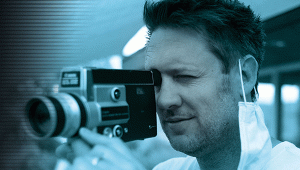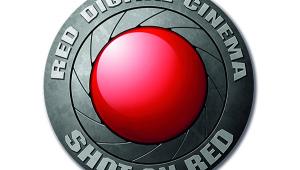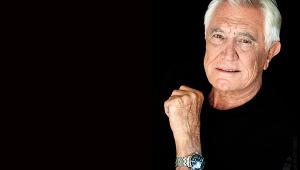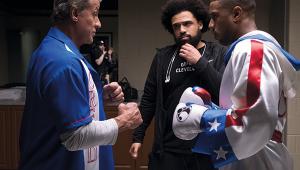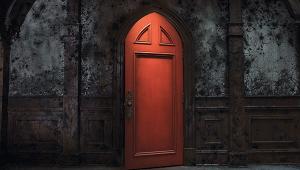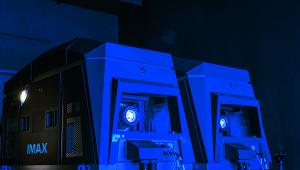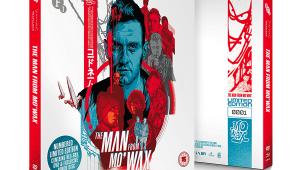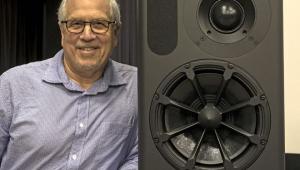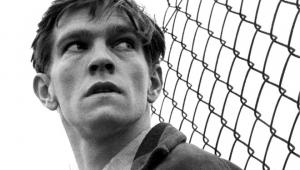Restoring The World at War for Blu-ray

It's common knowledge that the studios are still struggling when it comes to generating interest - and significant sales - for catalogue titles on Blu-ray. All of which made the news that UK-based FremantleMedia was spending a 'sizeable' amount of money remastering the BAFTA award-winning 1973 documentary series The World at War for a Blu-ray release later this year all the more surprising. So HCC paid a visit to London-based restoration and disc-authoring facility Eyeframe to find out more about this mammoth undertaking.
Monumental project
All 26 episodes of the series have been completely cleaned, re-graded and restored - a huge undertaking that involved making an estimated 3.6million fixes, in the region of 140,000 per episode. And while an automated Snell Archangel HD system (one of only two in the world) was used for first passes in the restoration process, according to Glaridis it only 'takes away about 70 to 80 per cent of the bigger marks, tram lines and the like'. After this, each sequence was then further restored by hand to 'remove smaller dots and bits of damage'.
Fighting the constraints
As time-consuming as this all sounds, Glaridis admits that it could have taken much, much longer. 'All of this is governed by time constraints. You could spend forever on this... and you know, we want to. But you have to set a time limit and you can't go further than that. If we go further then it'll affect the next section that goes through the process' he explained.
However, despite working against these constraints, the Eyeframe team are spending all of the time they can to do the project full justice, 'We have already, so many times, had to re-visit things because you just want to get it right even though you are constrained by time. We are aiming for a product where every episode you go to has a consistent look and feel. Because the moment you drop that, people will notice and it will pull them out of the programme. The problem is that there are so many different elements in every episode that visually it's all over the place. One bit can look great and the next bit can look really bad. You can put loads of work into a really bad section, but people won't realise it. They'll just think "Oh, that needs working on" and it's like if only they knew how much effort we put into making it look that good'.
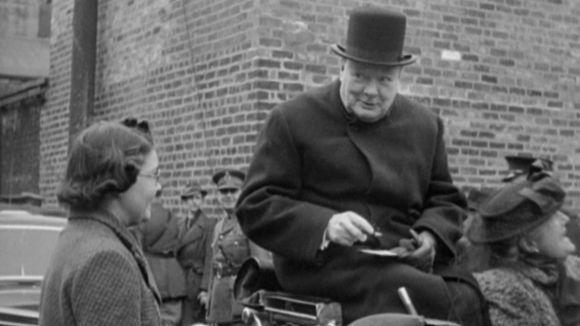
Audio issues
But the restoration was only part of the process of bringing the series to Blu-ray. Just as important was the actual AV presentation. On the audio side, the disc includes both an uncompressed stereo mix and a brand-new DTS-HD MA 5.1 track that also provided plenty of challenges. 'The audio itself has come from the original mag tapes' revealed Glaradis, 'so as well as the film, we've also been involved in cleaning up the audio, and that has its own issues. If it's something like a radio excerpt, it's crackly and you don't really want to work on that, you want to leave that as it is - that's how it sounds given the quality of the recording equipment from the time. What we just tried to do with something like that is boost the volume a little to give it a little more depth and weight, and get rid of the background hiss and noise that actually shouldn't be there. Back then decisions were made about the mix, and we really don't want to mess with. Even in the new surround mix you'll notice that... in the mix of the two-channel it dips and rises at times, and we've tried to follow that with the surround mix. That was one stumbling block we came across - we'd suddenly find that our surrounds were loud but it was quiet at the front.'
To crop or not
 Some controversy surrounds the release though following the news that it had been decided to crop the original 4:3 visuals to 16:9. As Fremantle's Anthony Thomas revealed, this was the result of not only numerous comparative tests, but also commercial pressures such as the fact that when it comes to worldwide broadcast rights, 'there simply aren't any HD TV channels that are willing to consider 4:3 material. However, it's worth pointing out that all of the grading and restoration was done to the original 4:3 material, before it was cropped to 16:9. So, if for some reason we ever need it, we do have the restored version in its original aspect ratio'.
Some controversy surrounds the release though following the news that it had been decided to crop the original 4:3 visuals to 16:9. As Fremantle's Anthony Thomas revealed, this was the result of not only numerous comparative tests, but also commercial pressures such as the fact that when it comes to worldwide broadcast rights, 'there simply aren't any HD TV channels that are willing to consider 4:3 material. However, it's worth pointing out that all of the grading and restoration was done to the original 4:3 material, before it was cropped to 16:9. So, if for some reason we ever need it, we do have the restored version in its original aspect ratio'.
While purists will undoubtedly moan, the new framing has the approval of series' producer Jeremy Isaacs and supervising editor Alan Afriat. And as Glaridis is keen to point out, 'it's not an automated process - we're adjusting the image manually, moving it up and down, left and right to ensure that the focus remains on the most important part of the image. You are going from 4:3 to 16:9 so, unavoidably, you do lose a little of the original image. But back when all of this material was shot, even then it was pretty much on the fine line, there weren't many rules going on with framing anyway. So while some people might look at the 16:9 version and think that it's cropping a little head and that, if you go back to the original, it's often shot like that anyway, or it's blurred, and it's like "No, no, this is how it is anyway". Hopefully it won't be judged that much because if you did go back and compare it's really not far off from the original'.
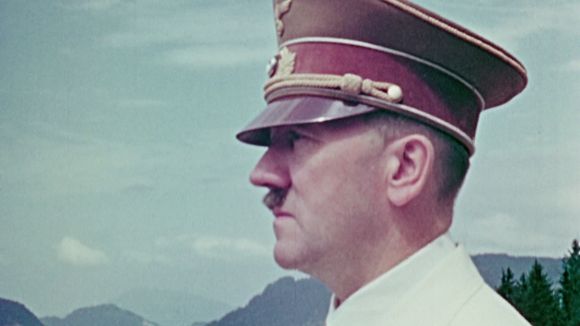
Choose your codec
Another problem came from the choice of codecs for the Blu-ray. Eyeframe ran tests with AVC, VC-1 and a recent version of MPEG-2 before settling on the former. 'It wasn't that there was a huge difference between AVC and VC-1' reveals Glaridis, 'but you'd just sit there and there was something about the VC-1 that was just a bit uncomfortable for the eye. It was taking the noise and grain and showing it too much. Really bringing it to the fore'.
Having had the chance to watch some of the restored material prior to this interview indicates that this costly and time-consuming project has been worthwhile. Although the very nature of the archival footage means that it won't necessarily astound you with its hi-def credentials, a side-by-side comparison with the previous DVD revealed improved detailing and contrast levels. And as Thomas stated, 'the variety of source material used in each episode means it was never going to look like The Hurt Locker. But we didn't want it to. We set out to be sympathetic to the original look and feel of the programme... The types of people who will buy this have very high standards. And we intend to meet them'.
The DVD and Blu-ray versions of The World at War: The Ultimate Restored Edition will be released on September 20, priced around £80 and £100 respectively.
 |
Home Cinema Choice #351 is on sale now, featuring: Samsung S95D flagship OLED TV; Ascendo loudspeakers; Pioneer VSA-LX805 AV receiver; UST projector roundup; 2024’s summer movies; Conan 4K; and more
|


